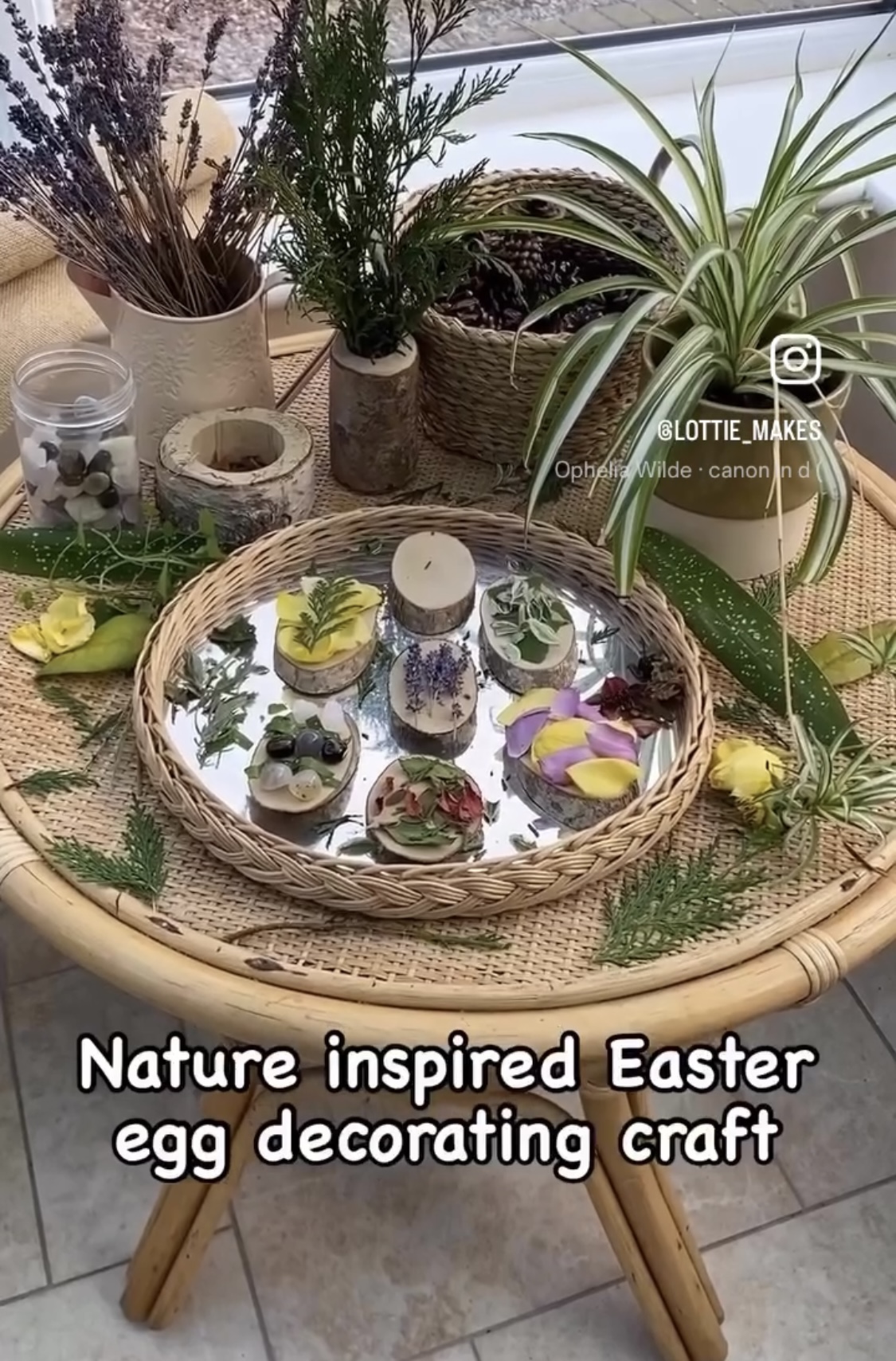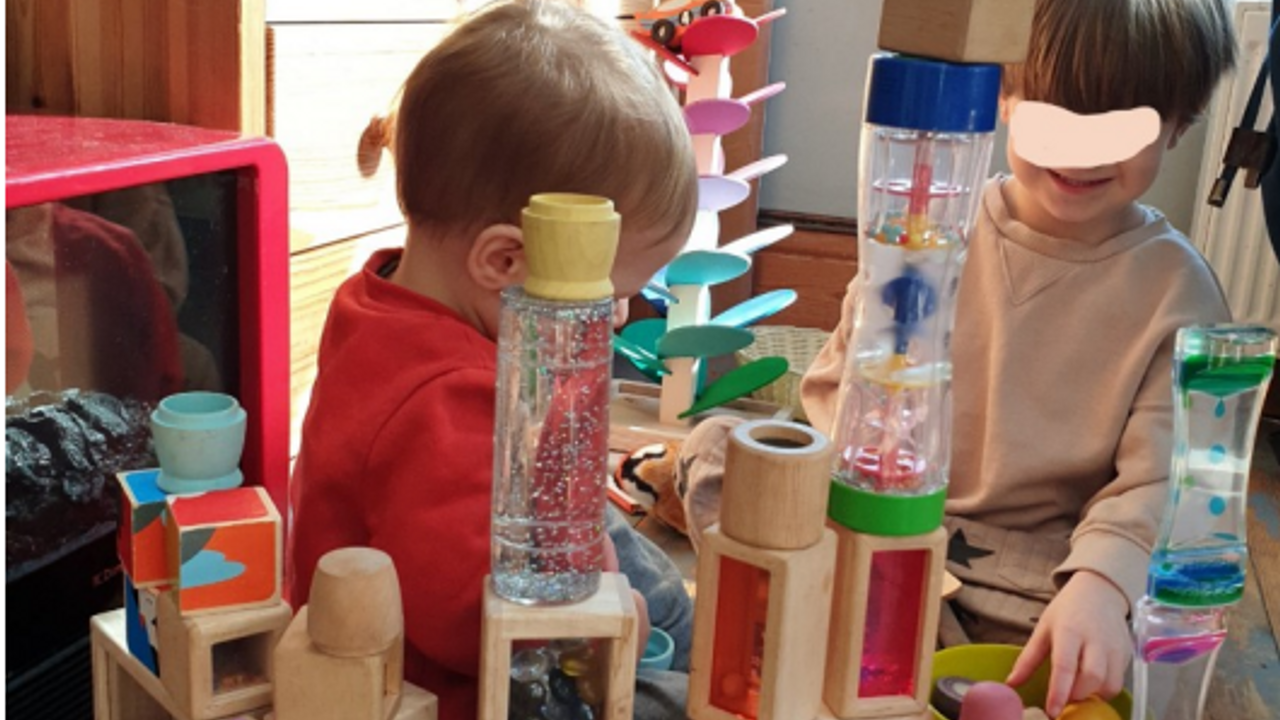Blog
“Strive to make everyday the best day of your life, because there is no good reason not to.” Hal Elrod
Play Based Learning This Easter
With Easter upon us shortly it's easy to get back into the habit of dressing each area of provision for the celebration.

Instead focus on leaving a few hooks in your adult initiated sessions that will grab your children's interest and lead them curious to know more. It could be sharing an Easter story for instance and then having one or two areas of your provision with provocations in linked to this. This then invites the child to explore and learn more. It also means that children that don't want to explore this can still head into the areas of provision to develop their own lines of enquiry or take the lead on their own child led play.

Taking this approach also frees you as an adult up from spending so much time filling every area of provision with resources and instead can really prioritise your time and focus your efforts on the things that will make the biggest impact.
With this in mind I wanted to take the opportunity to share some of the provocations and hooks that I h...
Winter at our Montessori Preschool Wise Owls

Embracing the concept of Hygge in our Montessori preschool Wise Owls (follow on instagram @wiseowlsmontessori) has been both magical and gratifying. The concept of living in the now and embracing the simple and natural things in life has been wonderful to see first-hand amongst the children. We embrace the sense of togetherness as well as capturing the feeling of nature, warmth and cosiness.
Throughout the year, we love to incorporate materials from our outdoor environment, for example, going on nature walks to collect branches and leaves to make our season tree which is proudly painted and created by the children and displayed in the classroom throughout the year. The children love learning about the different seasons and incorporating nature and hygge into the classroom. Providing natural objects made from wood allow us and the children to feel closer to the simplicity of nature. We have also recently gathered natural materials to make our own Winter Wreaths for our school doors. ...
50 Outdoor Play Activities this Autumn

Autumn is one of the most beautiful times of year.
Here we share 50 play activities for you to get inspiration from. Some wonderful ideas for your left over pumpkins too - not just for Halloween!
You can also find weekly nature planning ideas and invitations to play in my Rewilding Nature Study Programme
A Gentle Reminder Before You Begin 🌿
It can be tempting to look at a long list of activities and feel like you should do them all. But the Hygge approach is about slowing down, not speeding up.
Children don’t need a packed timetable. What they need is:
-
Experiences linked to their current skills (what they are practising right now).
-
Play that reflects their interests (what lights them up and holds their attention).
-
Learning that grows from what we already know about them as individuals.
✨ Instead of rushing through all 50 ideas, choose just a few as seasonal hooks. Perhaps puddle jumping, conkers, or pumpkins. Offer these gently over the season, observe where t...
How to Create a Hygge Welcome at your Setting

Welcome is a key word for our Early Years environments, as we welcome new parents and children to our settings and establish routines. Our practitioners continue to reflect upon how welcoming their entrances are to parents and children. Here are a few examples from last year.
The entrance to Nursery at Spring Lane Primary School
The entrance doors to Reception at Bourton Meadow Academy
The entrance to Nursery at George Grenville Academy
Part of the entrance display for Nursery at Lace Hill Academy
A welcome display for Reception at Lumbertubs Primary School
Our welcoming environments were inspired by a Hygge approach.
What is a Hygge approach?
Building a sense of togetherness between home and school reflects a Hygge approach. It is so important to us.
Positive relationships and the happiness of our parents and children are strongly linked.
Campfire Education Trust schools have worked hard to ensure that all our new starters feel a sense ofbelonging as soon as they e...
Hygge Case Study: "I had lost the joy in my job"

By Little Chickens Childminding
I’m a childminder who works by herself, and after 10 years of childminding I had lost the joy in my job. My setting was full of all the usual colourful plastic, noisy light-up toys, separate baby toys and preschool toys all designed with one purpose in mind, colourful displays on the walls with the children’s identical craftwork. Outside was set-up with more laminated displays, and bright toys - the nursery look that seemed to be expected. I was feeling claustrophobic and overwhelmed with it all, the children weren’t even engaging with anything and were flittering between toys, not interested in the carefully laid out tuff trays. there would be a chaotic ‘mess’ at the end of the day. I was struggling to switch off when not working, the playroom wasn’t being used by my family, and it had become a separate entity within our home. I was feeling under pressure planning activities - my work, life, and home was completely out of balance, and I wasn’t even fin...
"I realised we didn’t need to go to playgroups, soft play and squeeze busy activities into the children’s day."
My Name is Adele I am a registered childminder in Kent.
I have worked in childcare for 23 years doing may different positions as Nursery nurse, Nanny, TA and Respite Nursery Nurse for a children’s hospice.
After having my two beautiful girls currently aged 4 and 8 years old, I was finding it increasingly more difficult to find the correct position that fitted around our family life. After taking to close friends I decided to take up childminding.
I found it all quite daunting to start with as even though I have been in childcare for a long time I hadn’t had to do much paperwork as having dyslexia this can sometimes be very time consuming and difficult writing policies, planning and learning journals for the children was taking a lot of my family time up. Also had never run my own business before. I really enjoyed childminding but was overwhelmed and stressed that I wasn’t doing enough with the children.
A fabulous friend of my Samantha who I meet up regularly with had enro...
'The Hygge in the Early Years Accreditation has been a journey of personal growth and enrichment in my life-long learner journey.'

Member Case Study by Vania Almeida
The Hygge in the Early Years Accreditation has been a journey of personal growth and enrichment in my life-long learner journey. My name is Vania Almeida and I heard about hygge and KSEY’s work last year in a webinar when Vicky Murray, a childminder in England, presented the benefits of using the approach in her setting. I searched about it and I decided to join the accreditation in January 2020. I have been completing different trainings since I started my career in Early Years seven years ago, although I work in Education for nearly 15 years. The pandemic context led me to invest a lot in my self-development. I became first time manager last year and my intention was for the accreditation to help me create a hygge environment in a setting that was everything but hygge – very urban, colourful, depressive and empty. I had only two children enrolled and one staff member. I will share very few photos from this setting but I feel most of the work happened...
"We embarked on the HYGEE journey to promote a sense of calm and a tranquil environment "

For years at Small Steps, we had done everything precise, by the books, always forward thinking but chained by the frameworks and policies of a government falling slowly behind the times. Our nursery was beautiful but we had started to move towards more natural, open ended, authentic sourced resources after doing some research.

We embarked on the HYGEE journey to promote a sense of calm and a tranquil environment throughout the whole of the nursery as well as our outdoor area after completing our Curiosity Approach Accreditation. At the beginning of our journey, we set ourselves a vision. A vision of awe and wonder, peaceful, cosy and calm environment using real life and authentic resources where children can thrive in the learning environment. This is where HYGEE came in to place. We started by doing our research of the meaning of HYGEE and how we would embed it into our nursery setting. We did action plans on how and why we wanted to change the setting and implement HYGEE into it ...
How does your practice support your view of the child?

"If children feel safe, they can take risks, ask questions, make mistakes, learn to trust, share their feelings, and grow.”
Alfie Kohn
Inside the Hygge in the Early Years Accreditation we learn about the Reggio Inspired approach and work on developing our own image of the child and discovering what it is about each individual that makes them capable learners. Taking that time to get to know them and considering what makes each one special and tuning in to how they learn. Our own experiences as children, parents and educators shape what this can be and it's important to recognise the strengths and capabilities our individual children have.

I believe that young children are capable of high levels of engagement in their learning. But how can they show this if i'm always the one deciding what we should do around the agenda I have as an adult? I believe that doing this can set them up to fail.
Therefore my understanding of the child must be backed up by the practice and environment ...
‘Wow’ I couldn’t of ever imagined the true impact the Hygge Accreditation would have made on me, my family, and my setting.










